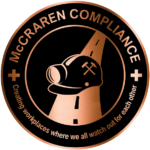What are the proper procedures and safety protocols for cleaning combustible dust, flammable liquids and reactive powders in industrial facilities?

Photo: VAC-U-MAX
Responding is Doan Pendleton, president, VAC-U-MAX, Belleville, NJ.
Proper procedures and safety protocols for cleaning combustible dust, flammable liquids and reactive powders in industrial facilities are essential for preventing fires, explosions, secondary dust explosions and hazardous chemical reactions. Each material poses unique risks, and addressing them requires adherence to OSHA regulations, National Fire Protection Association standards and the use of intrinsically safe industrial vacuum cleaners.
Combustible dust can ignite and explode when fine particles become airborne and encounter an ignition source. NFPA 652 and NFPA 654 provide key guidance, requiring facilities to conduct a dust hazard analysis and control dust accumulation through regular housekeeping. Traditionally, cleaning was done using sweeping or electric shop-type vacuum cleaners, but these methods can worsen the hazard by disturbing and suspending dust in the air, introducing them to potential ignition sources. To safely remove dust, compressed air-operated industrial vacuum cleaners are an ideal solution. These vacuum cleaners are intrinsically safe because they operate without electricity, eliminating the risk of sparks, static discharge or heat generation. This makes them perfectly suited for Class II hazardous environments. Combined with anti-static hoses and non-sparking tools, they offer a reliable, safe way to clean without increasing explosion risks.
Flammable liquids present dangers because of their low flash points and tendency to emit flammable vapors. According to NFPA 30 and OSHA 29 CFR 1910.106, these materials must be stored in approved flammable liquid cabinets and handled using bonded, grounded containers. In the event of a spill, the use of compressed air-operated industrial vacuum cleaners ensures cleaning can be done quickly, safely and without electrical power sources that might trigger ignition.
These vacuum cleaners enable safe collection and disposal of hazardous waste. Importantly, these vacuum cleaners are engineered to contain and control vapors, reducing inhalation risk and fire hazards.
Reactive powders, such as metal powders, pose extreme risks as they may react violently with water, air or other substances. NFPA 484 and NFPA 400 guide the handling of these materials. Standard cleaning methods are often dangerous, as many reactive powders ignite or explode on contact with water or when friction or static electricity is present. Compressed air-operated industrial vacuum cleaners again provide the safest method for cleaning, as they don’t rely on electricity; don’t produce sparks or heat; and can be customized with conductive, inert materials to avoid unwanted reactions. These vacuum cleaners allow for the careful collection of reactive metal powders that are rendered inert under a level of water, with materials contained in sealed, nonreactive stainless-steel containers.
Across all scenarios, compressed air-operated industrial vacuum cleaners offer a unifying solution that prioritizes safety, efficiency and regulatory compliance. Because they’re pneumatically powered, these vacuum cleaners are intrinsically safe and ideal for hazardous environments. They eliminate ignition sources associated with conventional electric vacuum cleaners and can be tailored to specific hazards with HEPA filters, antistatic hoses and spark-free components.
Cleaning combustible dust, flammable liquids and reactive powders requires more than standard protocols – it demands the right equipment. Compressed air-operated industrial vacuum cleaners provide a safe, effective, compliant and explosion-proof solution to managing hazardous materials, ensuring the protection of workers, facilities and the surrounding environment.
McCraren Compliance offers many opportunities in safety training to help circumvent accidents. Please take a moment to visit our calendar of classes to see what we can do to help your safety measures from training to consulting.
Original article published by Safety+Health an NSC publication


